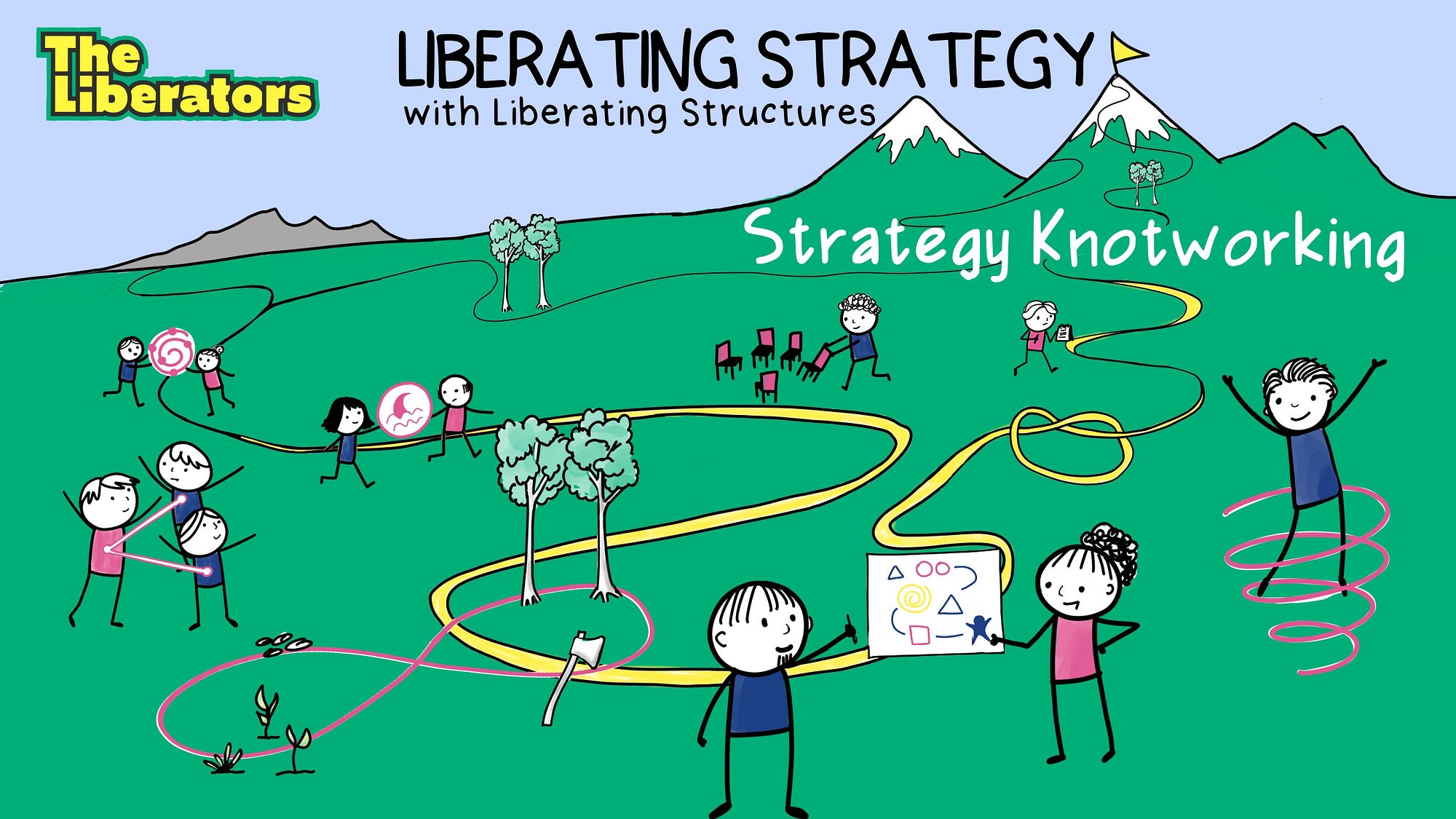
Organizations use Scrum because they hope it can help them become more Agile. Think of delivering value to customers sooner by releasing early & often, decreasing cycle time and lead time, improving team morale, lowering the number of defects, optimizing return on investment and increasing innovation rate.
Working effectively with Scrum requires strategy. Strategy is essentially no more than a goal, followed by a series of actions required to achieve that goal as well as the players who need to involved.
As a Scrum Master, you develop and help others develop strategies to become more successful with Scrum. How is the Development Team going to collaborate to achieve the Sprint Goal? How will they improve over time? What strategy guides the releases of a product? How does management interact with Scrum Teams? How will the organization as a whole work and grow successfully with Scrum? It’s all about strategy.
This post offers an example of how a Scrum Master can use the “Strategy Knotworking” to help the Scrum Team turn their ideas and ambitions into reality. From the perspective of a Scrum Master, we give a description of a 1-day Strategy Knotworking workshop. Please note that this is merely an example intended to make the seemingly abstract process of “Strategy Knotworking” tangible. The program will always be unique for each workshop, and tailor-made for the situation at hand.
“As a Scrum Master, you help others develop strategies to become more successful with Scrum.”
Liberating Structures
To support the organization and Scrum Team with strategy-making, the Scrum Master can make use of Liberating Structures. Liberating Structures are a collection of 30+ interaction patterns that unflatten, enrich and deepen interactions in groups. With Liberating Structures, it’s possible to start shifting entire organizations by tweaking the way groups and individuals interact.
Strategy Knotworking
“Strategy Knotworking“ is a coherent set of Liberating Structures that aims to involve and engage everyone in developing and evolving sustainable strategies on all levels of an organization. It uses the ‘probe-sense-respond’ pattern of Cynefin to tap into everyone’s experience, intelligence, and creativity while continuously (re)answering six core questions about the purpose, context, challenges, baseline, ambition, and action & evaluation.
For a detailed description of Strategy Knotworking, read more about it in this paper by Keith McCandless and Johannes Schartau.
The 6 core questions of Strategy Knotworking (visual by Thea Schukken)
Using Strategy Knotworking with Scrum Teams
Suppose that you are the Scrum Master of a Scrum Team that’s going to start the development of a new product. You certainly want to support the Product Owner to create a compelling vision of the product, and to determine how to measure the value delivered. You also want to help the Development Team improve their skills to deliver a “Done” increment every Sprint and to maximize flow by minimizing work-in-progress. Even so, you want to create an environment for the Scrum Team where they can collaborate productively with internal and external stakeholders.
To support the Product Owner, Development Team and the wider organization to achieve these goals, the Scrum Master decides to use the concept “Strategy Knotworking”, an approach for shaping the future while creatively adapting in the moment. This seems like a great match with the Agile approach the organization tries to embrace!
“Strategy Knotworking is an approach for shaping the future while creatively adapting in the moment.”
- Keith McCandless & Johannes Schartau
The possibilities are endless
The strategy a Scrum Team uses to build a product will always be unique and should be tailor-made to the team’s environment, skills, and experience. This requires the Scrum Master to explore different Liberating Structures that fit the team's situation. The good news is that there are infinite possibilities to answer the six questions of Strategy Knotworking and thereby create the team’s strategy.
The visualization below offers inspiration for the Liberating Structures you might use to answer the questions of Strategy Knotworking. If the symbols don’t make sense, take a look at the website of Liberating Structures.
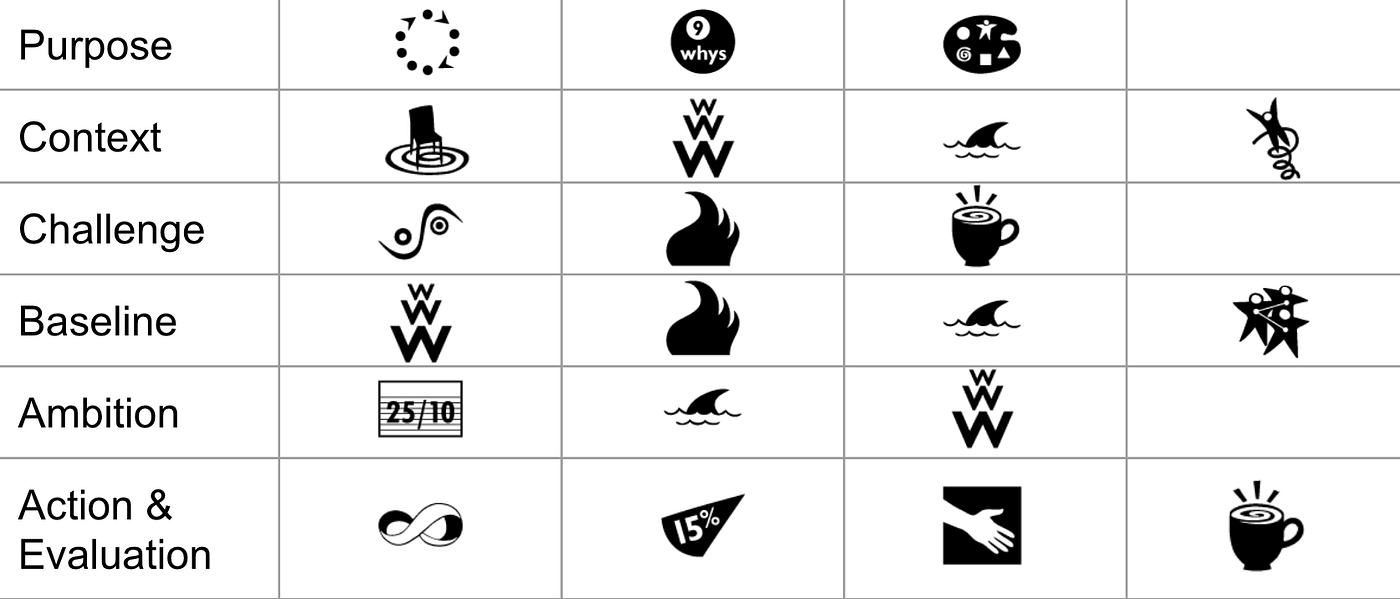
Possible Liberating Structures to use for answering the questions from Strategy Knotworking
An example of a Strategy Knotworking workshop
So back to your Scrum Team. You’ve scheduled a 1-day workshop with the purpose of involving everyone in shaping the team’s strategy in building the new product. You’ve asked another Scrum Master as the co-facilitator. Having a co-facilitator gives you time to catch your breath and reflect on how things are going. While one person is facilitating a structure, the other can prepare the next steps.
Together, you’ve designed the following string of Liberating Structures…

An example of a string (left to right) of Liberating Structures for a 1-day Strategy Knotworking workshop
Getting started (9:00–9:30)
Sharing ideas, challenges, expectations while making personal connections
At 9:00 AM everyone is present: Development Team, Product Owner, internal stakeholders, and the external customer. In total: 35 participants. You’ve decided to use Impromptu Networking to get started. Not everyone knows each other, so by using this structure, everyone is invited to participate from the very start and share stories, challenges or expectations. You ask the participants to form pairs and to have a conversation with each other about the question:
“What hopes, worries and questions do you have about the new product?”
After doing 3 rounds of 3 minutes, each time with different pairs, you collect the outcome and briefly discuss some patterns that stand out. Now that the ice is broken, it’s time to move to the first question of Strategy Knotworking.
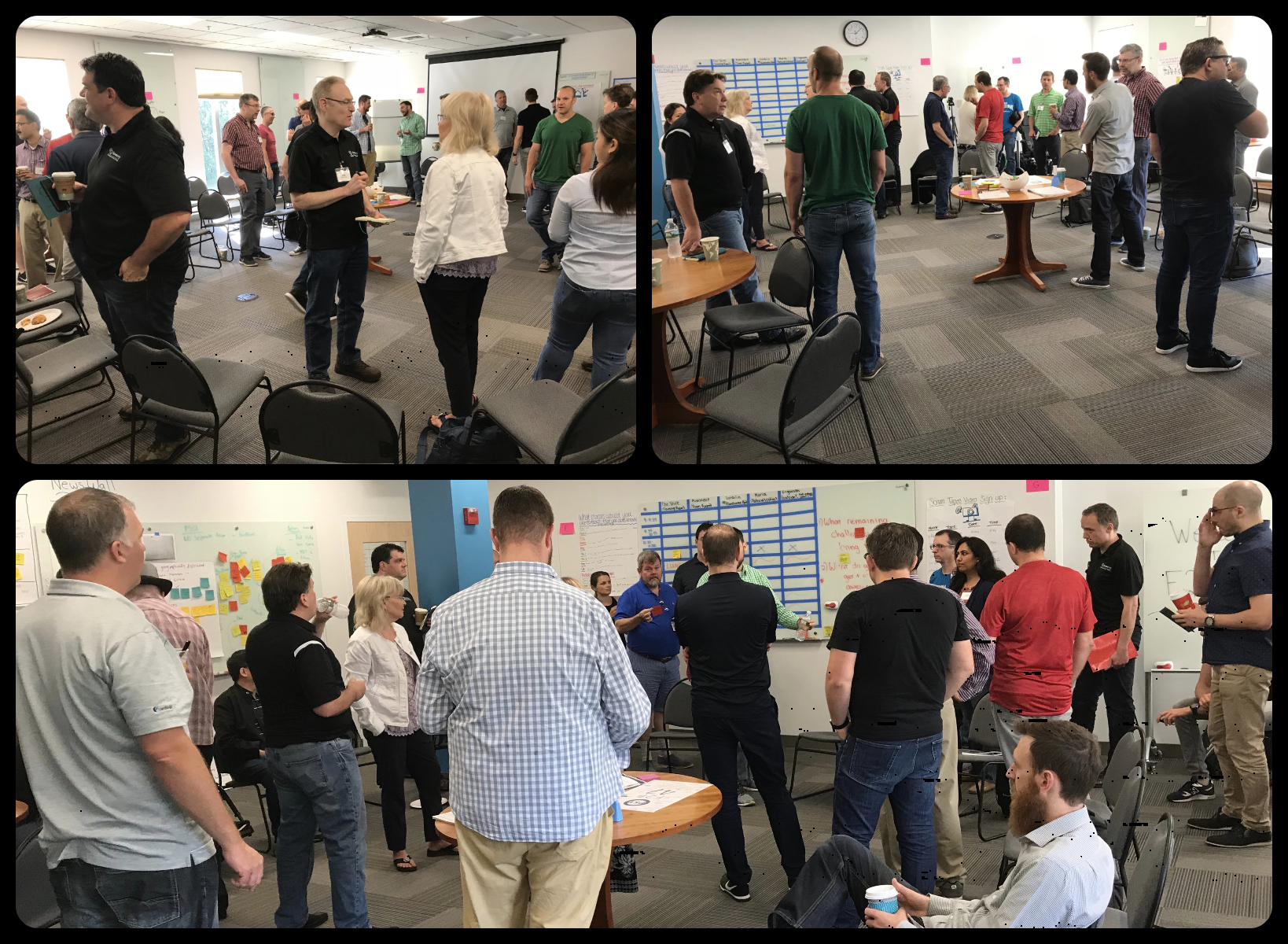
Impromptu Networking — sharing ideas and making new connections
1. Purpose (9:30–10:00)
What is the fundamental justification for the existence of our work?
As the Scrum Master, you decide to split the group into smaller teams. Each team contains a mixture of developers, stakeholders, the Product Owner, and the customer. You introduce Nine Whys as the Liberating Structure to clarify the purpose of the product.
In the first round, each team is asked to finish the sentence “Our new product exists in order to…”. For generating the results, the Liberating Structure 1–2–4-ALL is used. During the “ALL-part” the whole group shares their discoveries and selects the most inspiring purpose statement for the product.
2. Context (10:00–10:45)
What is happening around us that demands creative change?
You sense that the group is satisfied with the progress they’ve made so far. No need for a coffee break yet. It’s time to start the User Experience Fishbowl. Before the workshop, you already approached the 5 representatives of the client's organization with the request of participating in the UX Fishbowl.
The purpose statement the group defined with Nine Whys serve as the input for UX Fishbowl. The 5 customers are seated in the middle of the group, having the 30 other participants sitting closely around them. The inner group of customers starts sharing concrete examples with each other about the expectations they have from the product they’re going to build and the context in which it will take place.
The big question they also try to answer is:
What is it that we see happening in our environment, that demands creative change?
The outer circle formulates new questions for the customers which they discuss in the next round. In total, the UX Fishbowl takes 45 minutes. You thank the customers for sharing their ideas, knowledge, and expectations. Now it’s time for a coffee break!
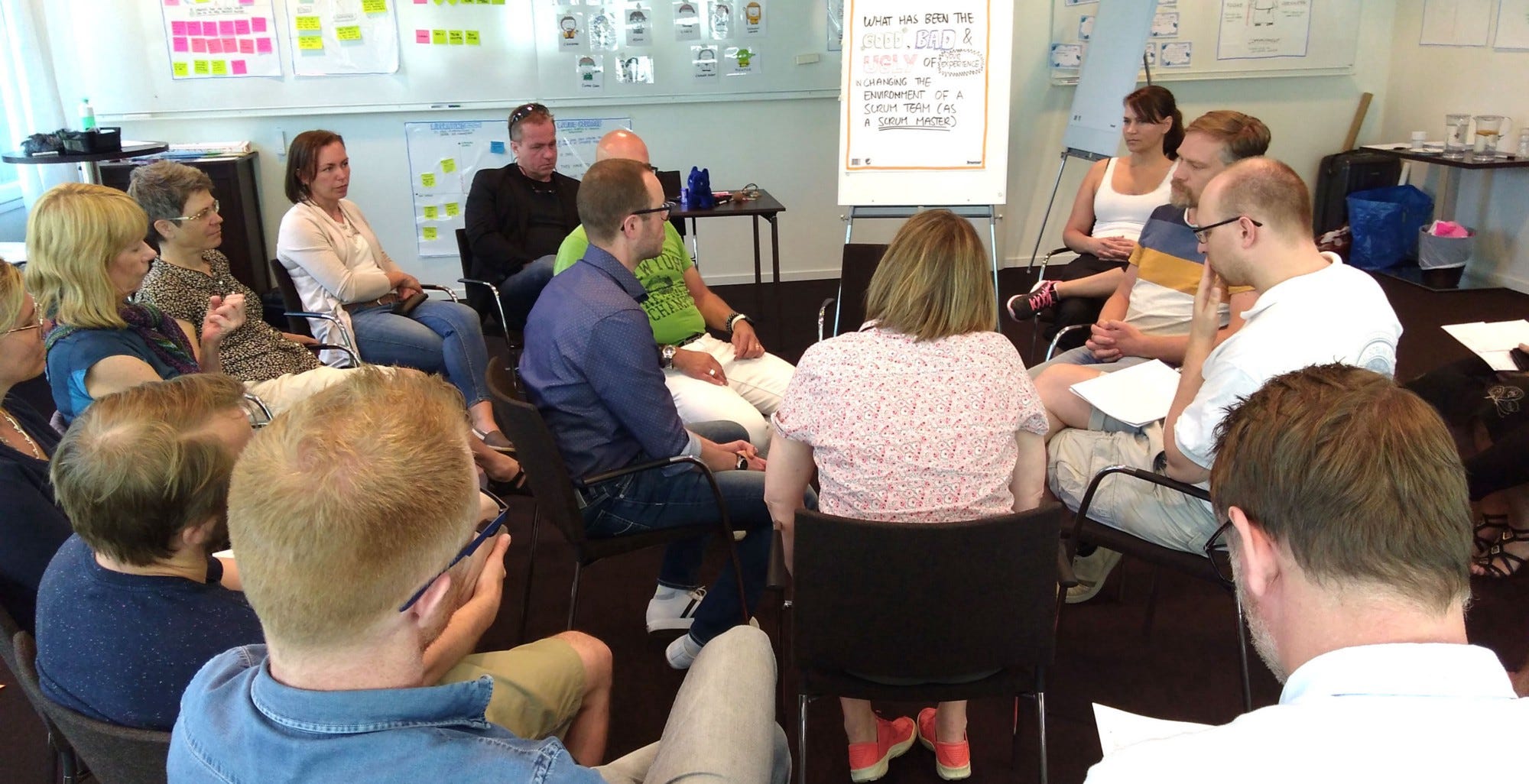
A UX Fishbowl in full swing
3. Challenge (11:00–12:15)
What paradoxical challenges must we face to make progress?
After the coffee break, you explain that the group will start creating Wicked Questions which will be used as input for Conversation Cafe. A Wicked Question articulates the paradoxical challenges a group must confront in order to succeed.
After having shared ideas and examples in small groups, the following Wicked Question is considered the most challenging and paradoxical:
How can we deliver a product increment on the short term and building a product for the long term simultaneously?
This question becomes the central theme of the Conversation Cafe. A structure that engages everyone in making sense of profound challenges while discovering and respecting different perspectives.
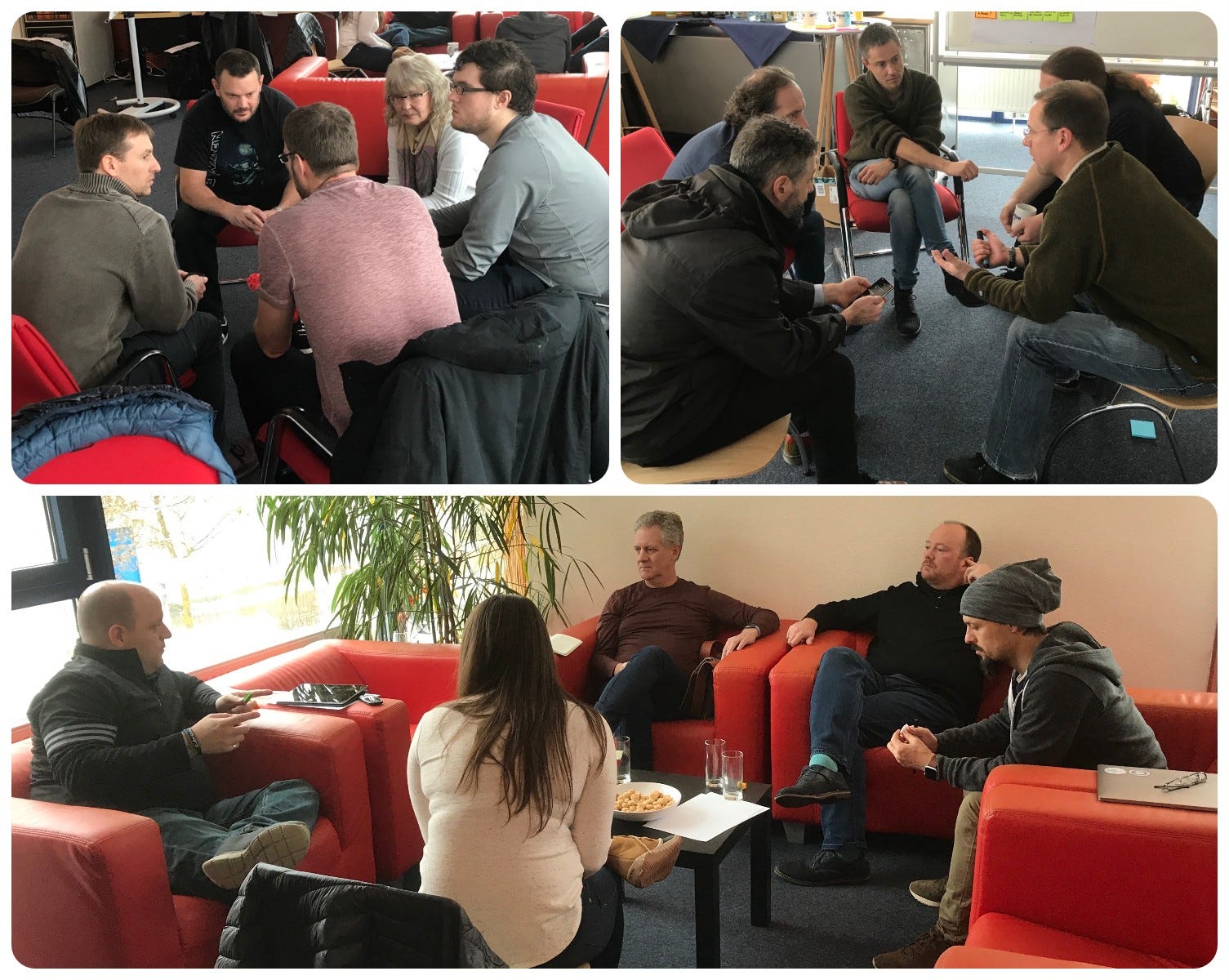
Conversation Cafe during the Scrum.org steward F2F, where we used it to build trust and safety by engaging groups in personal conversations. Note how carefully people are listening to each other, how they are leaning in and how they are giving each other their full attention.
4. Baseline (13:00–14:30)
Where are we starting, honestly?
At the start of the afternoon, the group wants to focus on creating a better understanding of the current situation and think of possible future scenario’s that might unfold. To you, this seems a perfect match with Critical Uncertainties. This Liberating Structure enables the group to develop strategies for operating in a range of plausible yet unpredictable futures.
You invite the participants to form small groups and to make a list of uncertainties they face by asking:
“Taking the development of the new product into account, what factors are impossible to predict or control their direction?”
Examples of factors they define are:
- The level of involvement of actual users
- What all the required functionality will be
- How collaboration as a group will work out
Based on these factors, the group thinks of possible scenario’s that might unfold and by what characteristical behavior each scenario can be identified. You ask the participants to give each scenario a name by which they can easily recognize it. The scenarios and its disquiet behavior are visualized on large posters. As a final step, the group formulates strategies that will help them become successful in these different situations.
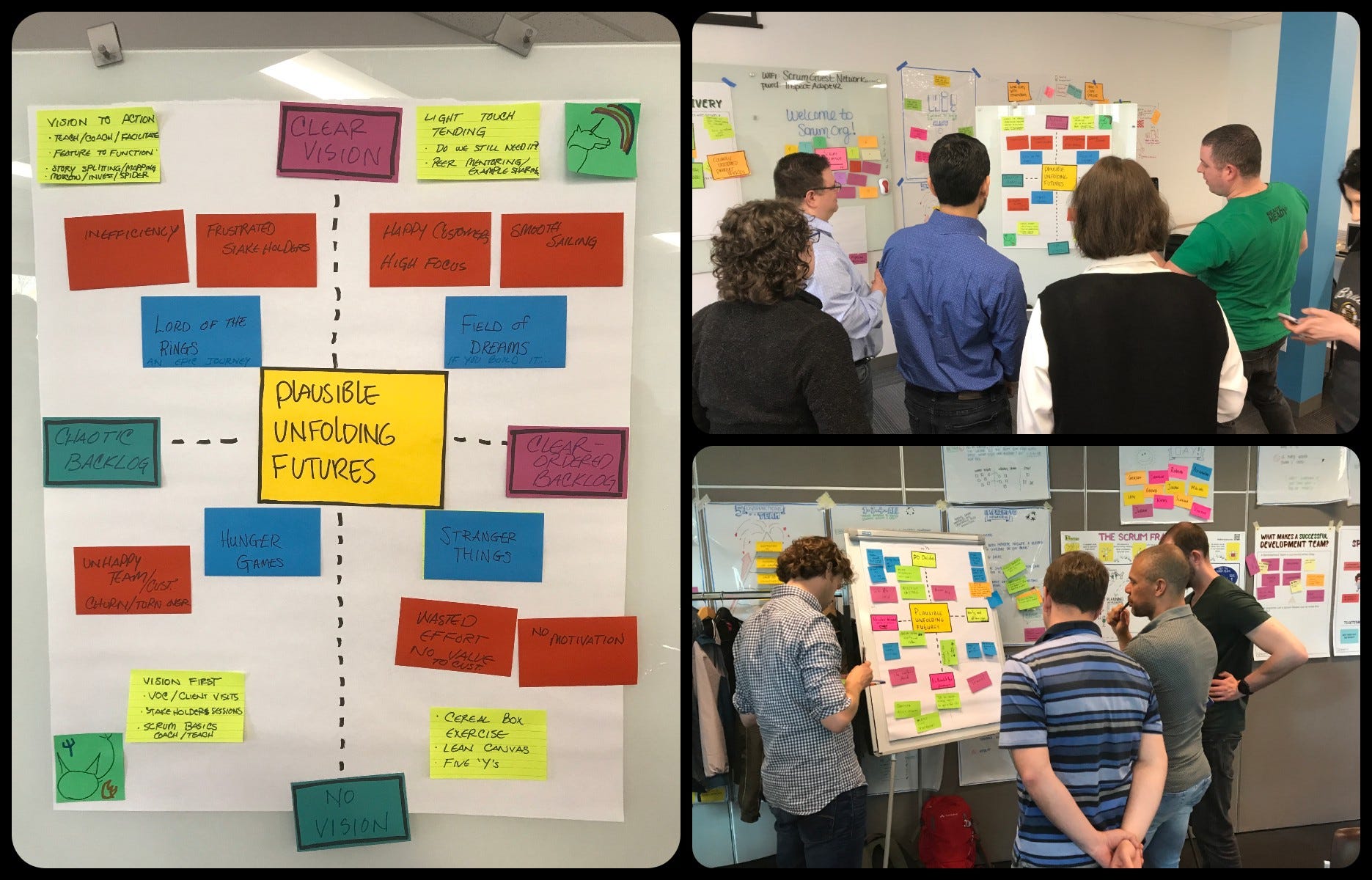
Pictures of Critical Uncertainties being used during the Scrum.org PSM II class
5. Ambition (14:45–15:30)
Given our purpose, what seems possible now?
The outcome of Critical Uncertainties provides the input for the ‘Ambition’-part of Strategy Knotworking. From experience, you know it’s tempting to jump straight into determining next steps, while they might be based mostly on assumptions. Therefore you suggest using What, So What, Now What to take a step back, explore what’s really going on and decide on the next steps together.
It structures our thinking by breaking our experience down into three steps: “What do we notice?”, “So, what does this mean?” and “Now, where do go from here?”. It takes inspiration from the Ladder of Inference by Chris Argyris, an expert on learning in organizations.
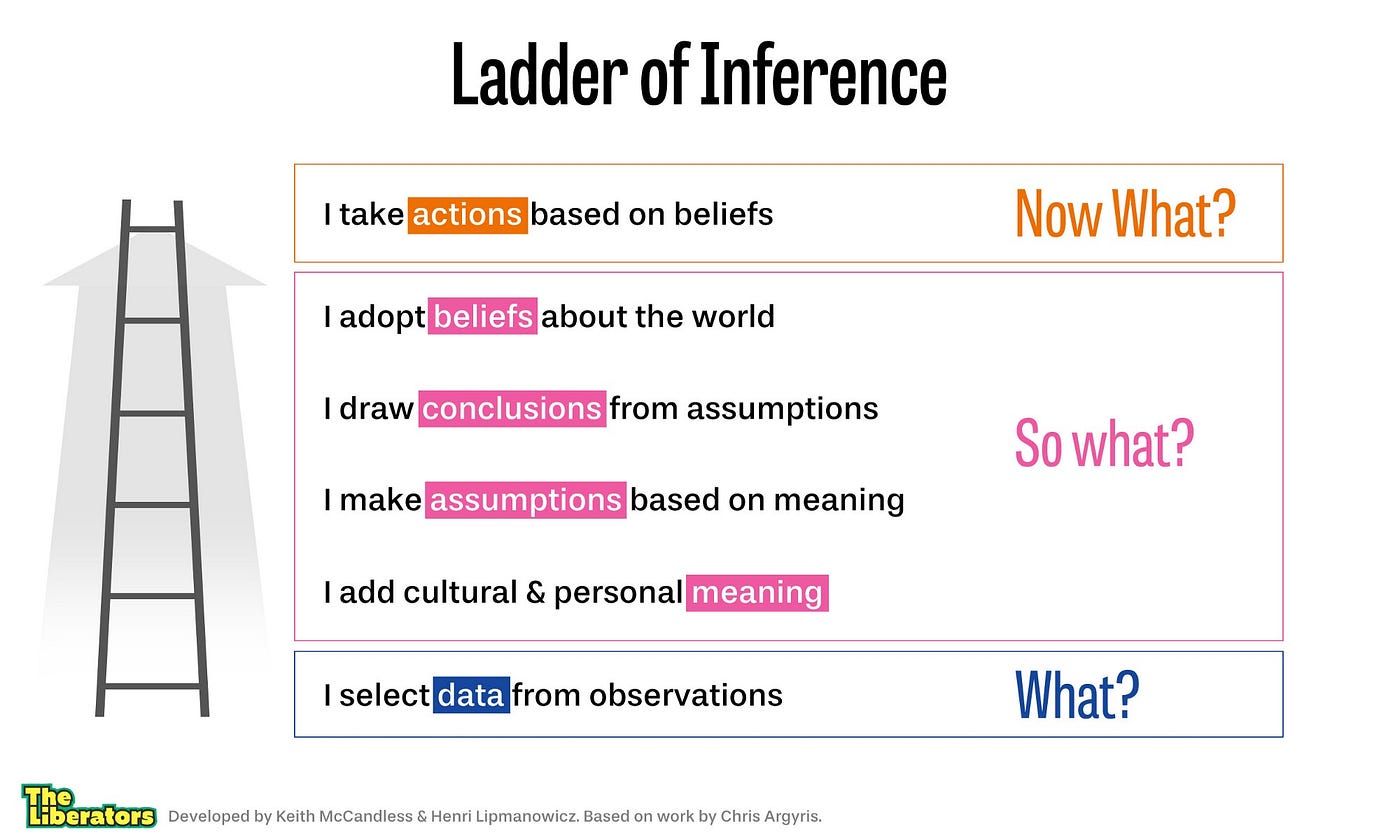
6. Action & Evaluation (15:30–17:00)
How are we acting our way toward the future, evaluating what is possible as we go?
You want to use the final part of this Strategy Knotworking workshop for exploring what it is that the group is keeping in the air (but shouldn’t), and what it is that they aren’t (but should). This is exactly the purpose of Ecocycle Planning. It will help the group rediscover their focus and creatively ‘destroy’ what isn’t valuable anymore.
By taking the development of the new product as the context, you ask everyone to individually reflect on the question:
“What do you need to creatively destroy or stop to move forward? What do you need to invest in?”
Individually, everyone identifies a first-action step or 15% Solutions that stop activities in the Rigidity Trap and Poverty Trap and will help the group as a whole.

A collection of Ecocycle Planning pictures
Closing of the workshop (17:00–17:30)
So far, it has been a very productive yet intense day. Therefore you want to offer the group an opportunity for reflection while having fun simultaneously. You decide to use Mad Tea, a Liberating Structures in Development. Mad Tea is an energetic, fast-paced exercise that helps to share ideas, insights, and thoughts with each other.
The sentences you use are…
- An amazing thought I had today…
- Something surprising that happened today is…
- An action or practice helping us move forward is…
- Something we need to research is…
- A bold idea I recommend is…
- A question that is emerging for me is…
- Something I plan to do is…
By having done Mad Tea, you’ve also reached to end of the 1-day Strategy Knotworking workshop. You’ve noticed that everyone is exhausted, but satisfied with the outcome.
The Product Owner and Development Team explain that they will use the outcome of this Strategy Knotworking workshop for the first Sprint Planning. The stakeholders and customers promise to attend the upcoming Sprint Review to jointly inspecting the first product increment and determine next steps. As a final comment, the Product Owner explains that she enjoyed that fact that shaping the product strategy has become a shared activity between the internal stakeholders, external customers, and the Scrum Team as a whole.
It’s time for some drinks and “bitterballen”!

Bitterballen: a Dutch delight!
Learn more?
We hope this article triggered your interest in Liberating Structures and Strategy Knotworking. For a detail description of Strategy Knotworking, check this paper by Keith McCandless and Johannes Schartau.

See how you can support us at patreon.com/liberators
